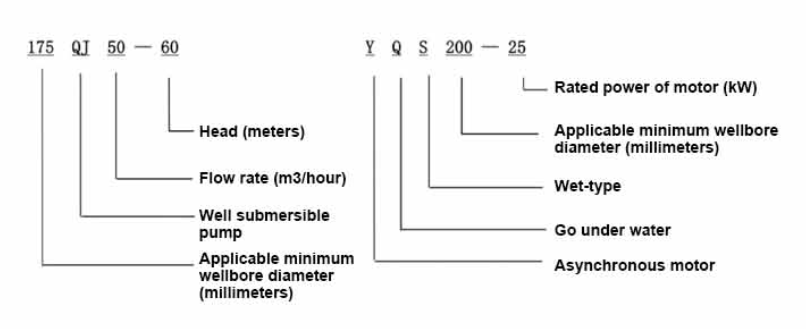Oct . 11, 2024 13:08 Back to list
Submersible Fuel Pump Applications and Benefits for Enhanced Fuel Efficiency
Understanding Submersible Fuel Pumps An In-Depth Overview
Submersible fuel pumps are indispensable components in numerous applications, particularly in the automotive and industrial sectors. These pumps are designed to operate while submerged in the fluid they are intended to pump, creating a highly efficient means of transferring fuel from one location to another. In this article, we will explore the basic principles of operation, advantages, applications, and maintenance of submersible fuel pumps.
What is a Submersible Fuel Pump?
A submersible fuel pump is an electric pump that is fully submerged in the fuel it is pumping. Unlike traditional pumps, which typically draw fuel to the surface, submersible pumps push the fuel to the surface. This is achieved through a sealed motor that is located at the base of the pump, submerged in the liquid being pumped. The design of submersible pumps allows them to maximize efficiency, reduce noise, and minimize the risk of vapor lock.
Principles of Operation
The operation of a submersible fuel pump revolves around its unique design and components. When the pump is activated, an electric motor turns an impeller, which generates pressure and pushes the fuel up through the discharge outlet. The motor is housed inside a waterproof casing, ensuring that it remains efficient even in demanding environments. The key components of a submersible pump include
1. Impeller This is the rotating part of the pump that moves the fuel through the system by converting rotational energy into kinetic energy. 2. Motor The electric motor drives the impeller and is designed to work efficiently while submerged in fuel. 3. Check Valve This one-way valve prevents backflow of fuel once it has been pumped to its destination. 4. Diffuser The diffuser aids in converting the kinetic energy from the impeller to pressure energy, allowing for better fuel flow.
Advantages of Submersible Fuel Pumps
Submersible fuel pumps offer several advantages over traditional pumps
2. Reduced Noise Levels The insulation of fluid around the pump significantly dampens noise, making them a quieter choice for residential and commercial applications.
submersible fuel pump

3. Lower Risk of Vapor Lock Being submerged minimizes the risk of vapor lock, a common issue in traditional pumps where fuel vaporizes in the pump, reducing efficiency.
4. Compact Design Submersible fuel pumps are typically smaller and easier to install than traditional pumps, which can be a crucial factor in space-constrained environments.
5. Self-Priming These pumps do not require priming, making them easier to use in various applications.
Applications of Submersible Fuel Pumps
Submersible fuel pumps are widely used in various applications, including but not limited to
- Automotive Applications In vehicles, submersible fuel pumps are primarily used within the fuel tank to deliver gasoline or diesel efficiently to the engine. - Industrial Settings In many industrial applications, these pumps are used in underground tanks or reservoirs where fuel is stored and needs to be moved to other areas. - Agriculture Submersible pumps are often used in irrigation systems to transfer fuel for machinery or to supply water for farming needs. - Residential Many homeowners utilize submersible fuel pumps for home heating oil systems, ensuring a steady supply of fuel to their heating appliances.
Maintenance and Care
Maintaining a submersible fuel pump is crucial for its longevity and performance. Regular inspection of electrical connections, the condition of the pump casing, and the operation of the motor is recommended. Furthermore, ensuring that the fuel is clean and free of contaminants will significantly extend the life of the pump. In addition, following the manufacturer's guidelines for service intervals and operational parameters is essential.
Conclusion
Submersible fuel pumps play a critical role in the efficient movement of fuel across various sectors. Their innovative design and operational advantages make them a preferred choice in scenarios requiring reliability and efficiency. As industries continue to evolve, the importance of understanding and selecting the right submersible fuel pump cannot be overstated. Proper maintenance and care are essential to ensure these pumps perform optimally, providing a consistent and reliable fuel supply for numerous applications.
-
Submersible Water Pump: The Efficient 'Power Pioneer' of the Underwater World
NewsJul.01,2025
-
Submersible Pond Pump: The Hidden Guardian of Water Landscape Ecology
NewsJul.01,2025
-
Stainless Well Pump: A Reliable and Durable Pumping Main Force
NewsJul.01,2025
-
Stainless Steel Submersible Pump: An Efficient and Versatile Tool for Underwater Operations
NewsJul.01,2025
-
Deep Well Submersible Pump: An Efficient 'Sucker' of Groundwater Sources
NewsJul.01,2025
-
Deep Water Well Pump: An Efficient 'Sucker' of Groundwater Sources
NewsJul.01,2025
-
 Submersible Water Pump: The Efficient 'Power Pioneer' of the Underwater WorldIn the field of hydraulic equipment, the Submersible Water Pump has become the core equipment for underwater operations and water resource transportation due to its unique design and excellent performance.Detail
Submersible Water Pump: The Efficient 'Power Pioneer' of the Underwater WorldIn the field of hydraulic equipment, the Submersible Water Pump has become the core equipment for underwater operations and water resource transportation due to its unique design and excellent performance.Detail -
 Submersible Pond Pump: The Hidden Guardian of Water Landscape EcologyIn courtyard landscapes, ecological ponds, and even small-scale water conservancy projects, there is a silent yet indispensable equipment - the Submersible Pond Pump.Detail
Submersible Pond Pump: The Hidden Guardian of Water Landscape EcologyIn courtyard landscapes, ecological ponds, and even small-scale water conservancy projects, there is a silent yet indispensable equipment - the Submersible Pond Pump.Detail -
 Stainless Well Pump: A Reliable and Durable Pumping Main ForceIn the field of water resource transportation, Stainless Well Pump has become the core equipment for various pumping scenarios with its excellent performance and reliable quality.Detail
Stainless Well Pump: A Reliable and Durable Pumping Main ForceIn the field of water resource transportation, Stainless Well Pump has become the core equipment for various pumping scenarios with its excellent performance and reliable quality.Detail
